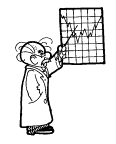 ETFs are open-ended, registered investment companies organized under the Investment Company Act of 1940 that have
been granted certain exemptive relief from the SEC to allow secondary market trading on the AMEX exchange. ETFs
represent ownership in over 140 different index funds compiled by one of the following index providers:
Standard & Poor's, Dow Jones & Company, Frank Russell Company, Cohen & Steers Capital Management, Inc.,
the Nasdaq Stock Market, Inc., Goldman, Sachs & Co., Morgan Stanley Capital International Inc., and Lehman Brothers.
As of June 2005, ETFs had assets of over $200 billion, up from $84.6 billion in 2001 and only $1.1 billion in 1995. ETFs are easy to trade, highly liquid, more tax-efficient than traditional mutual funds and can be bought with a minimal investment. Trading ETFs can be a successful strategy in both bull and bear markets. They are a great way to gain low cost exposure to specific sectors, industry groups or global markets.
ETFs are open-ended, registered investment companies organized under the Investment Company Act of 1940 that have
been granted certain exemptive relief from the SEC to allow secondary market trading on the AMEX exchange. ETFs
represent ownership in over 140 different index funds compiled by one of the following index providers:
Standard & Poor's, Dow Jones & Company, Frank Russell Company, Cohen & Steers Capital Management, Inc.,
the Nasdaq Stock Market, Inc., Goldman, Sachs & Co., Morgan Stanley Capital International Inc., and Lehman Brothers.
As of June 2005, ETFs had assets of over $200 billion, up from $84.6 billion in 2001 and only $1.1 billion in 1995. ETFs are easy to trade, highly liquid, more tax-efficient than traditional mutual funds and can be bought with a minimal investment. Trading ETFs can be a successful strategy in both bull and bear markets. They are a great way to gain low cost exposure to specific sectors, industry groups or global markets.
What Are ETFs And How Do They Work
ETFs are trusts, which contain a basket of stocks that mirror the performance of recognized stock and bond indexes.
Unlike mutual funds, ETFs can be bought and sold at any point during the trading day providing liquidity not found
in open-end mutual funds. The investor can also gain broad market exposure without costing an arm and a leg.
Arguably, ETFs have become the fastest growing investment product on the financial landscape.
All ETFs are listed on the AMEX exchange.
Advantages Of Exchange Traded Funds
- Tax efficiency: Unlike mutual funds, there are no capital gain distributions with ETFs. Your gain or loss is realized only when you close an open position.
- Diversification: Each ETF typically has 20 - 150 stocks weighted by market capitalization.
- Transparency: Unlike mutual funds, ETFs are not actively managed. The stocks in the portfolio remain in the trust until they are replaced in the corresponding index.
- Scheduled dividends: ETFs that included stocks that pay dividends distribute those dividends on a quarterly basis.
- Intra-day buying and selling flexibility:
- Inexpensive transaction fees.
- ETFs are marginable and can be shorted on a down tick.
- Low management fees: Average expense ratio of a mutual fund might be as high as 1.5% versus .25% for an ETF.
- Can be traded using stop and limit orders.
To view the particulars of a fund, click here: http://www.amex.com. Enter the symbol in the box located in the upper left-hand corner and then click on 'Quotes'. To view the funds top ten holdings and additional information, click on the 'Holdings Button' located on the right side of the quote bar. For a complete listing of the current funds, click on the ETFs button located on the left side bar on the AMEX home page. Under the Product Lookup drop down, select 'List All Products'.
The Market Edge Stock Watch module has three lists of ETFs which include all of the equity based funds. The lists are grouped as Sector, Domestic or International ETFs. By combining the power of the Market Edge 'Opinions' with the diversification offered by ETFs, a potent investment program can be structured.
 The Right Stock At The Right Time®
The Right Stock At The Right Time® The Right Stock At The Right Time®
The Right Stock At The Right Time®